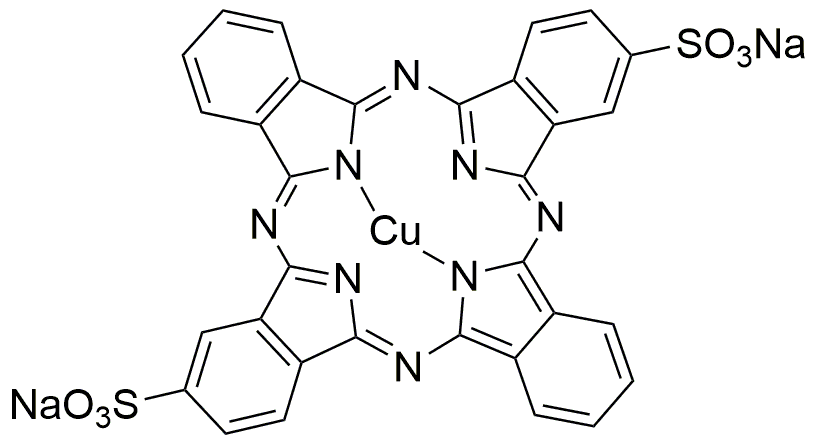Direct blue 86 is widely utilized in research focused on:
- Dyeing Textiles: This compound is primarily used in the textile industry for dyeing cotton, wool, and synthetic fibers, providing vibrant and long-lasting colors.
- Biological Staining: In laboratories, it serves as a staining agent for microscopy, helping researchers visualize cellular structures and processes in biological samples.
- Environmental Monitoring: Direct blue 86 is employed in assessing water quality, as it can be used to trace dye pollution in aquatic environments, aiding in environmental protection efforts.
- Research in Material Science: The compound is used in studies related to polymer science, where it helps in understanding the interactions between dyes and various materials.
- Art and Craft Applications: Hobbyists and artists utilize this dye for creating artworks, crafts, and custom textiles, benefiting from its rich color and ease of use.
General Information
Properties
Safety and Regulations
Applications
Direct blue 86 is widely utilized in research focused on:
- Dyeing Textiles: This compound is primarily used in the textile industry for dyeing cotton, wool, and synthetic fibers, providing vibrant and long-lasting colors.
- Biological Staining: In laboratories, it serves as a staining agent for microscopy, helping researchers visualize cellular structures and processes in biological samples.
- Environmental Monitoring: Direct blue 86 is employed in assessing water quality, as it can be used to trace dye pollution in aquatic environments, aiding in environmental protection efforts.
- Research in Material Science: The compound is used in studies related to polymer science, where it helps in understanding the interactions between dyes and various materials.
- Art and Craft Applications: Hobbyists and artists utilize this dye for creating artworks, crafts, and custom textiles, benefiting from its rich color and ease of use.
Documents
Safety Data Sheets (SDS)
The SDS provides comprehensive safety information on handling, storage, and disposal of the product.
Product Specification (PS)
The PS provides a comprehensive breakdown of the product’s properties, including chemical composition, physical state, purity, and storage requirements. It also details acceptable quality ranges and the product's intended applications.
Certificates of Analysis (COA)
Search for Certificates of Analysis (COA) by entering the products Lot Number. Lot and Batch Numbers can be found on a product’s label following the words ‘Lot’ or ‘Batch’.
*Catalog Number
*Lot Number
Certificates Of Origin (COO)
This COO confirms the country where the product was manufactured, and also details the materials and components used in it and whether it is derived from natural, synthetic, or other specific sources. This certificate may be required for customs, trade, and regulatory compliance.
*Catalog Number
*Lot Number
Safety Data Sheets (SDS)
The SDS provides comprehensive safety information on handling, storage, and disposal of the product.
DownloadProduct Specification (PS)
The PS provides a comprehensive breakdown of the product’s properties, including chemical composition, physical state, purity, and storage requirements. It also details acceptable quality ranges and the product's intended applications.
DownloadCertificates of Analysis (COA)
Search for Certificates of Analysis (COA) by entering the products Lot Number. Lot and Batch Numbers can be found on a product’s label following the words ‘Lot’ or ‘Batch’.
*Catalog Number
*Lot Number
Certificates Of Origin (COO)
This COO confirms the country where the product was manufactured, and also details the materials and components used in it and whether it is derived from natural, synthetic, or other specific sources. This certificate may be required for customs, trade, and regulatory compliance.


